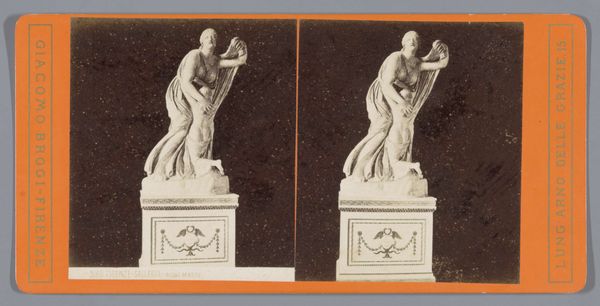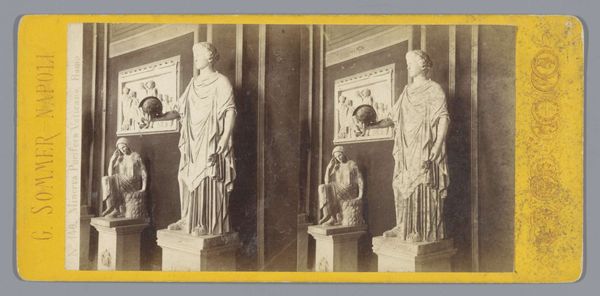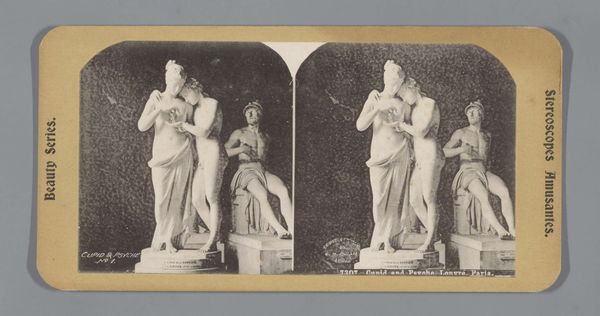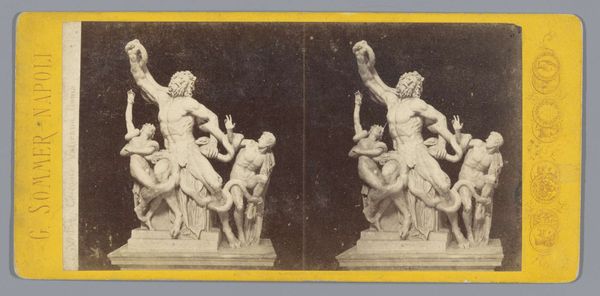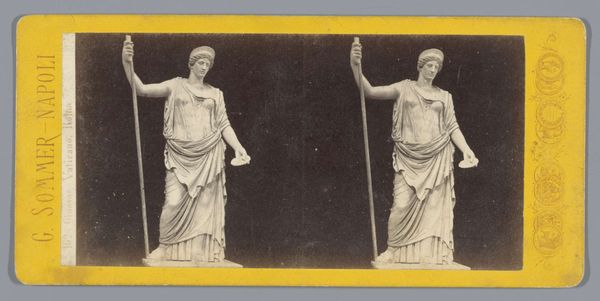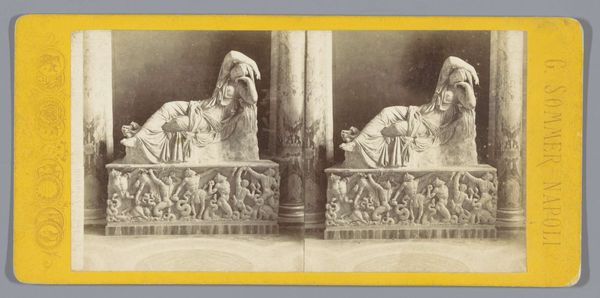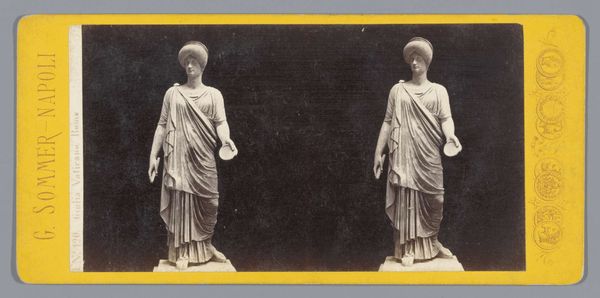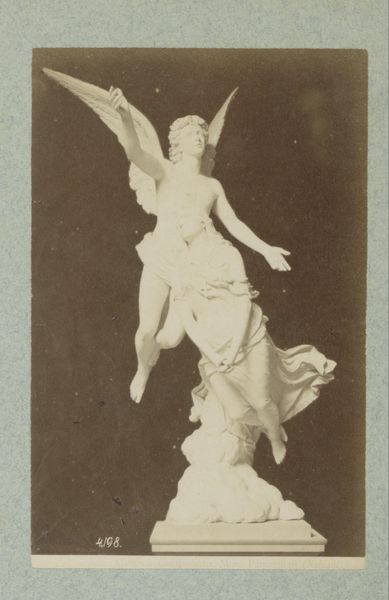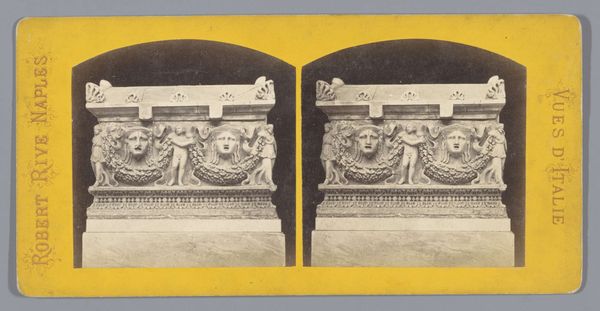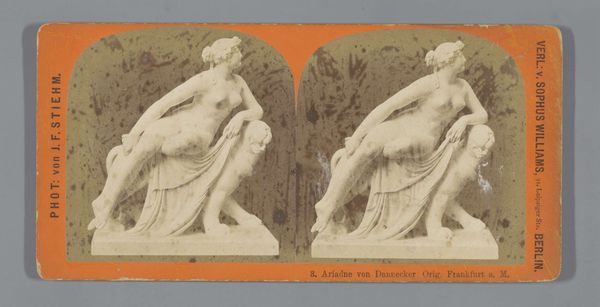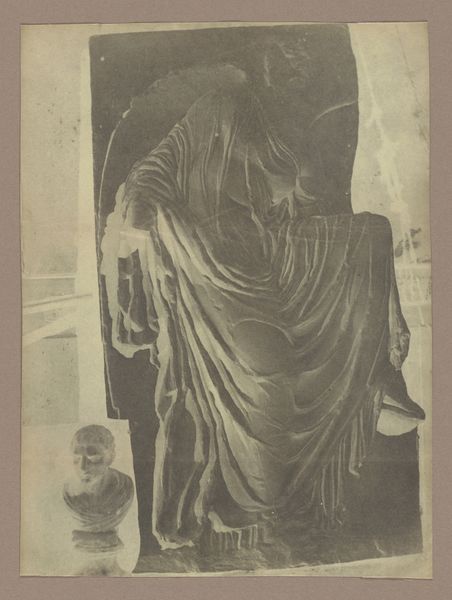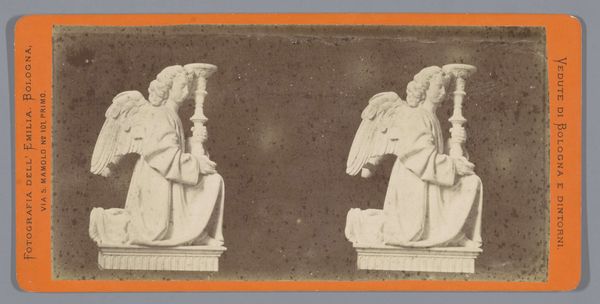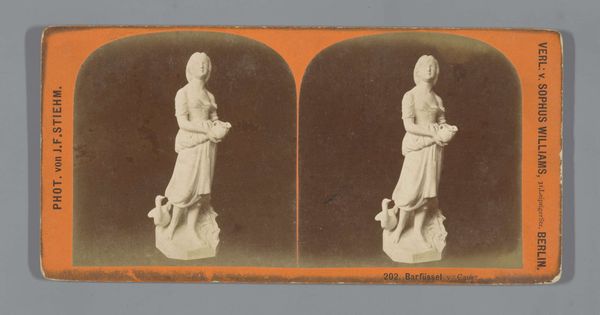
photography, sculpture, gelatin-silver-print
#
sculpture
#
greek-and-roman-art
#
classical-realism
#
figuration
#
photography
#
sculpture
#
gelatin-silver-print
#
history-painting
Dimensions: height 84 mm, width 177 mm
Copyright: Rijks Museum: Open Domain
Curator: This gelatin silver print, dating from approximately 1860 to 1880, presents a photographic study of the "Chiaramonti Niobid in de Vaticaanse Musea" by Giorgio Sommer. The photograph itself resides here at the Rijksmuseum. Editor: What immediately strikes me is the sense of captured drama—frozen mid-flight almost, like she's about to step off the pedestal and argue her case. It feels heavy with implied narrative. Curator: Indeed. The sculpture, a Niobid, carries a poignant story. Niobe, a queen in Greek mythology, famously boasted of her fourteen children, angering Leto who only had two – Apollo and Artemis. They avenged their mother’s honour by killing all of Niobe's offspring. This Niobid, therefore, is often interpreted as embodying grief and the futility of pride against the gods. Editor: Right, so this isn’t just a pretty face, but a distillation of hubris and its consequences. And look how Sommer frames her; almost like a ghostly apparition emerging from the darkness, doubly rendered with the stereoscopic duplication… like a tragic echo! Curator: Precisely! The choice of a gelatin silver print—a process known for its clarity and tonal range—highlights the texture of the sculpture and perhaps aims to underscore the "realness" of classical antiquity to the contemporary viewer. Note the composition also serves to highlight the lines and flowing drapery, further amplifying the feeling of desperate flight or escape. Editor: You know, seeing it this way, detached from its usual museum setting, makes it so immediate. It's like the artist is plucking this single figure from the grand narrative of classical history and forcing you to confront it on its own stark terms. Curator: An excellent observation. Photography like this really offered a new way to engage with and disseminate art, especially sculptural works. Sommer likely sold these stereo cards as souvenirs but in doing so, he transformed the Niobid into a portable symbol, an easily consumed meditation on suffering and fate. Editor: I never thought of it that way, the photograph, now almost an archaeological fragment in its own right, continues to broadcast her timeless anguish across centuries. Fascinating.
Comments
No comments
Be the first to comment and join the conversation on the ultimate creative platform.
